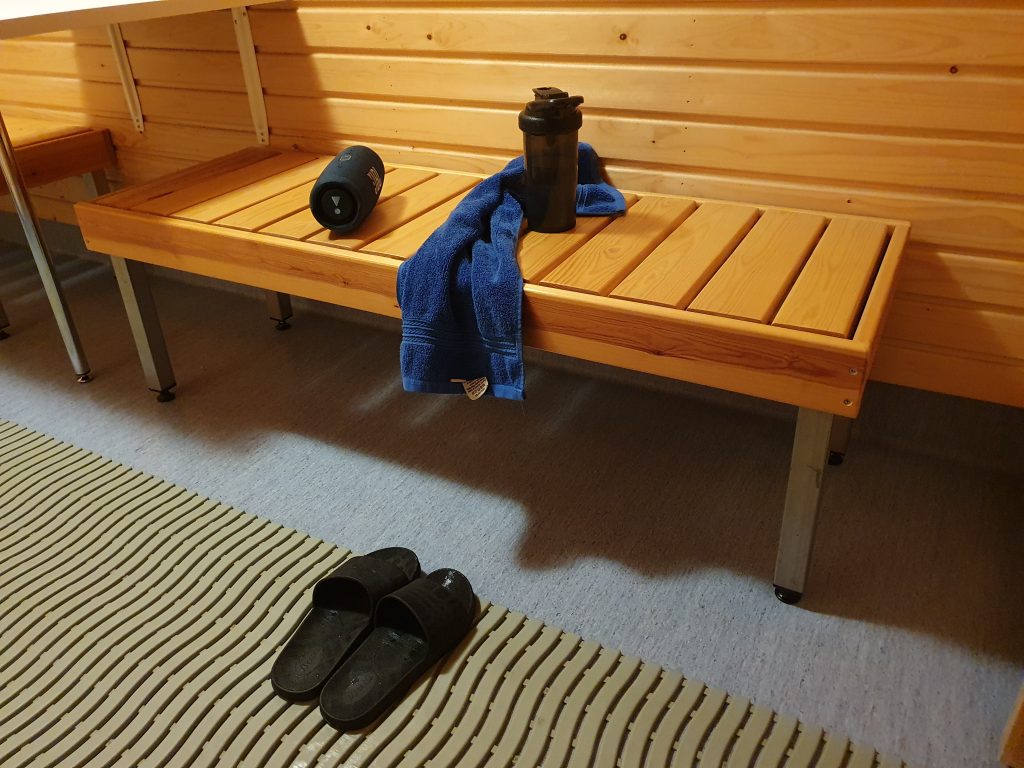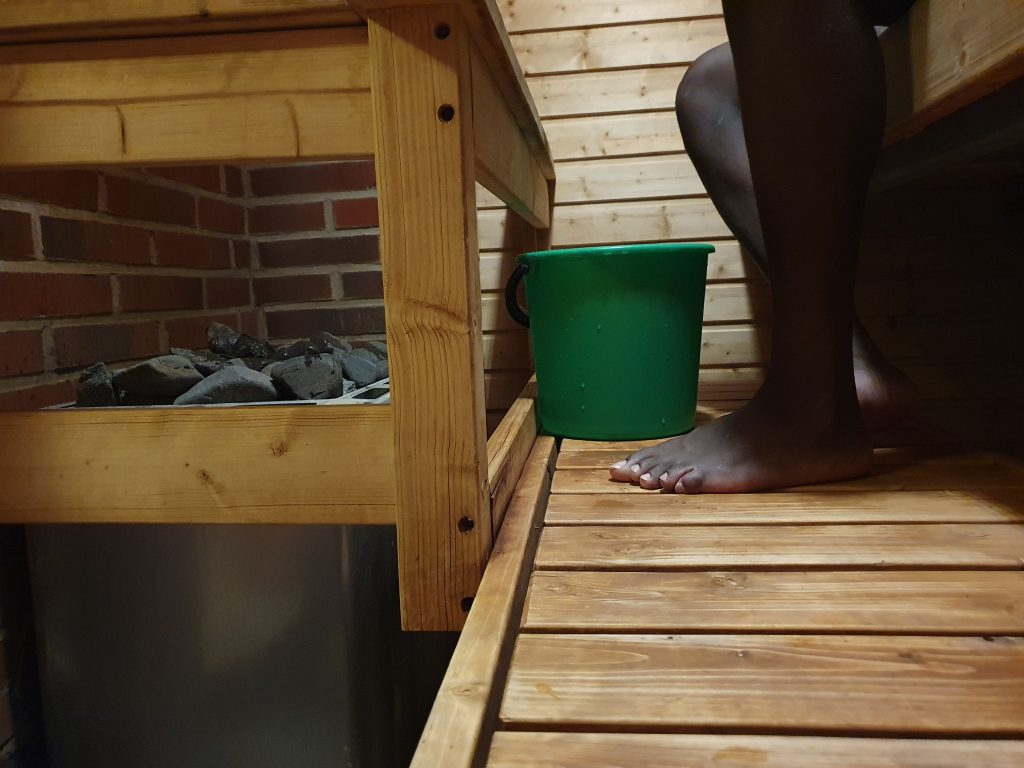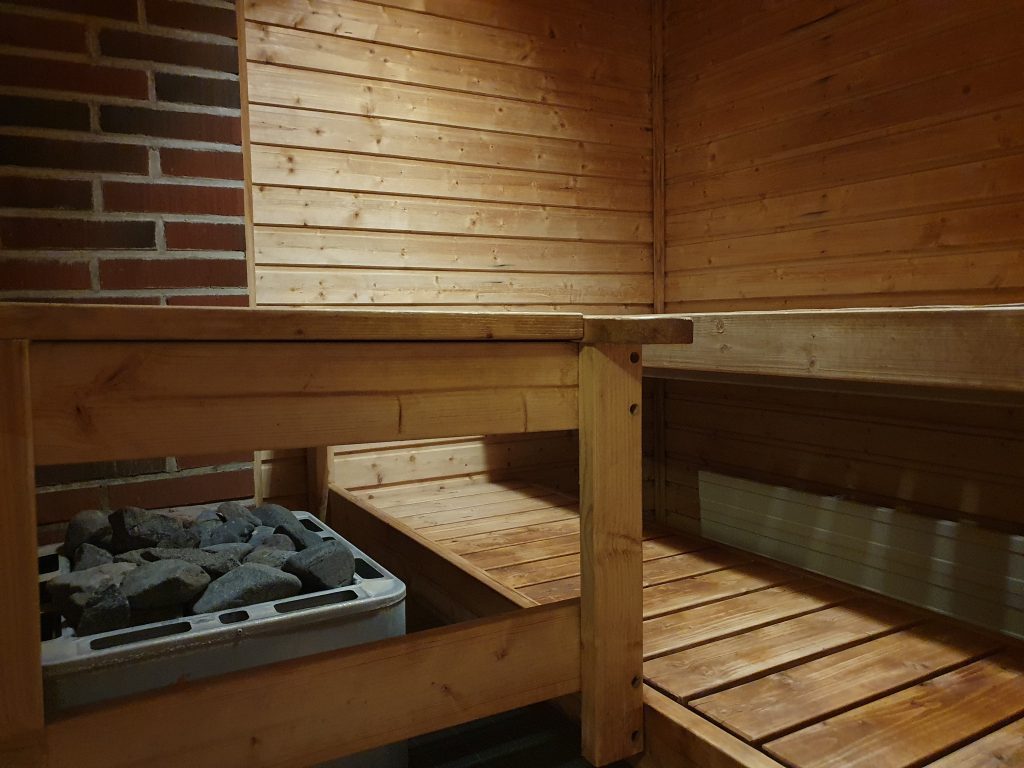
My first experience in the sauna was a month after moving to Finland. I was hooked right away. Having lived in Finland for over a year now, I find myself slowly becoming absorbed in the Finnish culture. Nowadays, I’ve made it a thing to visit the sauna after my long workout sessions as a way to relax and unwind. But what does the sauna do after a workout? Does it have any benefits for your body?
Key Takeaways
- Post-workout sauna sessions offer several physiological benefits, including improved muscle recovery, muscle relaxation, and the release of endorphins.
- Sauna use can contribute to better cardiovascular health by promoting flexible blood vessels and lowering blood pressure.
- To enjoy a safe sauna experience, follow safety precautions such as staying hydrated, avoiding metal jewellery, and refraining from using electronic devices.
- Different types of saunas, including infrared, steam, and Finnish saunas, offer various unique benefits, such as improved circulation, skin health, and detoxification.
What Does the Sauna Do After a Workout?

Using a sauna post-workout boosts your blood circulation, increases cardiovascular endurance, promotes muscle relaxation, reduces muscle soreness, and aids in muscle recovery, enhancing overall workout performance. Additionally, it relaxes your mind after a long workout session. Let’s discuss them in detail:
1. Muscle Recovery
After a strenuous workout, the body requires oxygen and nutrients to help replenish glycogen stores and rebuild muscle proteins for faster recovery.
The heat from the sauna causes the blood vessels to dilate, which increases blood flow throughout your body.
This increased circulation can help deliver oxygen and nutrients to your muscles, which can aid in muscle recovery.
A 2023 study published in the Biology of Sport investigated the effects of a single infrared sauna (IRS) session on post-exercise recovery of neuromuscular performance, autonomic nervous system function, subjective sleep quality, and muscle soreness.
The study concluded that a post-exercise infrared sauna session improves recovery of neuromuscular performance and muscle soreness after resistance exercise training, which may enhance the mood, readiness, and physical performance of an athlete.
2. Muscle Relaxation

Muscle tension and soreness are common after a workout. This occurs due to the damage and microscopic tears that the muscles and connective tissues experience during exercise, leading to delayed-onset muscle soreness (DOMS).
This discomfort associated with muscle soreness can be alleviated through various methods, including the use of a sauna, which can help relieve muscle tension and pain, promote relaxation, and aid in muscle recovery.
3. Elimination of Toxins
Extensive research has shown that saunas aid the body in releasing toxins.
An example is this study that examined police officers exposed to methamphetamine. They underwent sauna-based detoxification therapy, including exercise and nutrition.
Results showed significant health improvements, with 92.8% completing the protocol. Sauna therapy may alleviate chronic symptoms from chemical exposures, suggesting broader applications for detoxification treatments.
Therefore, sweating profusely as a result of the high heat experienced in a sauna promotes a deeper level of detoxification. This process helps the body rid itself of excess toxins, including heavy metals, harmful chemicals, drugs, alcohol, and other impurities.
4. Elevating Mood
If you frequent the sauna, you must have experienced a feeling of relaxation, happiness, and peace. This is attributed to the release of endorphins.
Saunas have been shown to increase the levels of beta-endorphin in the blood. Beta-endorphin is known to create feelings of pleasure and comfort, which might explain why many people find saunas relaxing.
In conclusion, using a sauna after a workout can have several physiological benefits. It can increase blood flow, aid in muscle relaxation, and stimulate the release of endorphins. These benefits can help improve muscle recovery, reduce the risk of injury, and improve your overall performance during your next workout.
5. Improving Cardiovascular Health
Sauna bathing, long known for its relaxing benefits, may also play a crucial role in heart health, according to a study involving 1688 participants with an average age of 63.
This study found that frequent and prolonged sauna use is linked to a lower risk of death from cardiovascular disease (CVD) in both men and women. Remarkably, this correlation held even when accounting for factors such as age, smoking, and high blood pressure.
Regular sauna sessions help improve the way blood vessels function, making them more flexible and reducing the stiffness of arteries. Saunas also impact the autonomic nervous system, which helps control body functions like blood pressure. All these effects work together to lower blood pressure.
These changes in the body are important for reducing the risk of heart disease and predicting the chance of dying from cardiovascular problems in both males and females.
Additionally, when combined with regular exercise, sauna bathing has been found to have a supplementary effect on cardiorespiratory fitness, systolic blood pressure, and total cholesterol levels, leading to improved cardiovascular function.
Finally, intermittent post-exercise sauna bathing has been shown to improve exercise heat tolerance and exercise performance markers in temperate conditions.
Etiquette and Safety Practices of Using Sauna After a Workout

Safety Precautions of Using Sauna After Exercise
Here are the guidelines and precautions you must take when entering the sauna after your workout:
a) Duration and Temperature
When using a sauna after a workout, it is important to follow some guidelines to ensure a safe and effective session.
The ideal duration of a sauna session is usually between 10 to 15 minutes. Finnish saunas are typically set between 80 to 90 degrees Celsius.
However, if you are new to using a sauna, start with shorter sessions of 5 to 10 minutes and gradually increase the duration as your body adapts to the heat.
b) Stay Hydrated
After finishing a long workout session, it’s important to rehydrate before taking a sauna bath due to dehydration. Drink plenty of water before, during, and after your sauna session. Additionally, avoid alcohol and other substances that can cause dehydration.
c) Do Not Wear Jewellery
It is advisable to avoid wearing jewellery in a sauna, especially after a workout. Metal jewellery can become very hot in a sauna, potentially causing discomfort or burns to the skin. This includes necklaces, earrings, bracelets, and rings.
d) Do Not Use Your Phone or Any Other Electronic Devices
It is not recommended to use your phone or any other electronic devices in the sauna, as the high heat can degrade electronics and batteries over time, potentially causing permanent damage to the devices. It can also be a safety hazard.
If you feel dizzy, lightheaded, or experience any discomfort, leave the sauna immediately. After the sauna, take a cold shower to help your body cool down and prevent overheating.
Etiquette of Using a Sauna After Exercise
It is also important to follow sauna etiquette to ensure a safe and comfortable experience. Here are a few things to keep in mind:
a) Shower Before Entering
You are coming from a workout session, so ensure you wash off any sweat, odours, and germs before entering the sauna.
b) Always Bring a Towel

You will need a towel to sit on and wipe away the sweat.
c) Wear Appropriate Attire
If you are going to a public sauna after your workout, it’s customary to wear a towel or bathing suit to maintain decency and sanitation for other users.
d) Do not bring any Food or Drinks into the Sauna.
This is to prevent spills and maintain a clean environment.
e) Leave Quietly
If you need to leave the sauna for any reason, do so quietly and quickly to avoid letting out too much heat.
Types of Post-Workout Saunas and Their Specific Benefits

There are several types of saunas available with various features. Here are some of the most popular types of saunas and what they can do for you.
1. Infrared Sauna
Infrared saunas utilize infrared heaters to emit infrared light, which is absorbed by the skin and helps to increase body temperature.
This type of sauna is known for its ability to penetrate deeper into the skin, helping to increase circulation and promote relaxation.
Infrared saunas have been shown to have several benefits, including:
- Improved circulation
- Reduced inflammation
- Increased relaxation
- Improved detoxification
2. Steam Sauna
Steam saunas, also known as Turkish baths, use steam to create a humid environment. This type of sauna is known for its ability to help open up the pores and promote sweating, which can help flush out toxins and impurities from the body.
Steam saunas have been shown to have several benefits, including:
- Improved skin health
- Increased relaxation
- Improved respiratory function
- Reduced stress
3. Traditional Finnish Saunas
Finnish saunas, also known as dry saunas, use a heating element to create a dry heat environment.
This type of sauna is known for its ability to help increase body temperature and promote sweating, which can help flush out toxins and impurities from the body.
Finnish saunas have been shown to have several benefits, including:
- Improved cardiovascular health
- Increased relaxation
- Improved respiratory function
- Reduced stress
What Potential Risks Are Associated With Sauna Post-Workout?

While using a sauna after a workout has many benefits, there are some potential drawbacks and considerations to keep in mind. Let’s discuss a number of them.
1. Dehydration
One of the biggest concerns when using a sauna after a workout is the risk of dehydration. The high temperatures in the sauna, coupled with the aftermath of a long workout session, can cause you to sweat heavily, which can lead to a loss of fluids and electrolytes.
To prevent dehydration, it is important to drink plenty of water before, during, and after your sauna session.
2. Cardiovascular Strain
Sauna bathing is generally safe for most healthy individuals and can even be used sensibly among patients with stable cardiovascular disease.
However, individuals with underlying cardiovascular issues may experience cardiovascular strain after using a sauna, especially post-workout.
The heat in the sauna can cause your heart rate to increase, which can be dangerous for people with heart conditions or high blood pressure.
If you are at risk of cardiovascular strain, it is crucial to consult a doctor before using a sauna after working out.
Additionally, you should monitor symptoms, limit sauna time, stay hydrated, avoid extreme temperatures, and follow medical advice to ensure the safety and benefits of sauna use.
3. Skin Irritation
The high temperatures in the sauna can also cause skin irritation, especially if you have sensitive skin.
To prevent skin irritation, it is important to shower before and after your sauna session and to avoid using any lotions or oils that can clog your pores.
Final Words on the Health Benefits of Sauna After Workout?
In summary, using the sauna after exercising can offer several advantages to your body. It can aid in relaxing your muscles, reducing muscle tension, and supporting muscle recovery. Besides, frequent use of a sauna post-workout is associated with improved cardiovascular health, the elimination of toxins, and an elevated mood.
For your safety, it’s important to drink plenty of water before, during, and after using the sauna. Avoid wearing any jewellery inside the sauna, especially metal, as it can get hot and cause burns. If you are new to the sauna, start with shorter sessions to get used to the heat. Lastly, please do not bring any electronic devices, such as your phone, into the sauna.
Finally, practising proper sauna etiquette is crucial for a safe and enjoyable experience. Remember to shower before entering, bring a towel for hygiene, wear appropriate attire in public saunas, avoid bringing food or drinks inside, and exit quietly if needed.
On a side note, if you are finding it difficult to muster the energy to hit the gym in the morning, then consider these tips and tricks to be a morning workout person.
Frequently Asked Questions About Using the Sauna Post-Workout
What are the benefits of using a sauna after a workout?
Using a sauna after a workout, also known as a post-workout sauna, can help with muscle recovery, improve circulation, and reduce muscle soreness. The high temperatures in the sauna may also benefit heart health.
How long should I spend in the sauna after a workout?
The optimal time in the sauna after a workout varies, but generally, spending around 10–15 minutes in the sauna can be beneficial. It’s important to listen to your body and not exceed your comfort level.
What are the different types of saunas that can be used post-workout?
There are various types of saunas, including infrared saunas, steam saunas, and traditional Finnish saunas. Each type offers different heat experiences and may have unique health benefits when used after exercise.
Are there any precautions to consider when using a sauna after a workout?
If you’re new to saunas or have any underlying health conditions, it’s advisable to consult a doctor before using a sauna post-workout. Additionally, it’s essential to stay hydrated and not remain in the sauna for extended periods of time to avoid overheating.
What are the specific benefits of using a Finnish sauna after exercise?
The benefits of using a sauna after a workout, especially in a traditional Finnish sauna, include improved circulation and relaxation. The heat of the sauna can help relieve muscle tension and provide a soothing experience.
Can spending time in the sauna after a workout help with muscle recovery?
Yes, sauna bathing post-workout can aid in muscle recovery. The heat and steam in the sauna can promote blood flow to muscles, potentially reducing soreness and accelerating the recovery process.